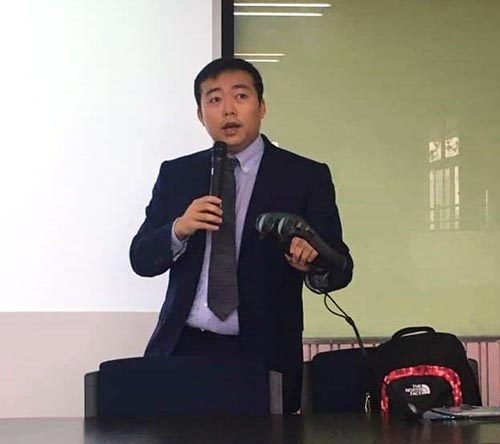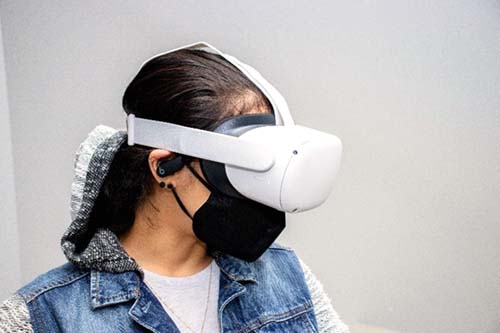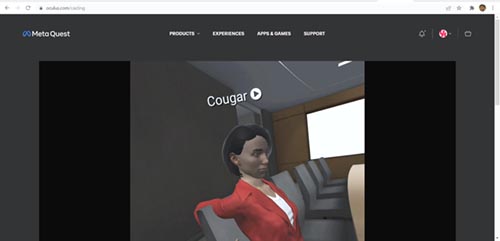CougAR Lab Students Examine the High-Tech Future of Augmented Reality
By Dennis Spellman
March 16, 2022
The newly created University of Houston CougAR Laboratory is studying how augmented reality, or AR, will be used in the future and how society is likely to react to it.

“Because human beings live most of our lives in 100% physical reality, at this point we know less about how people will react to augmented reality,” said Tony Liao, associate professor in the UH College of Technology’s Department of Information Logistics and Technology, and founder of CougAR Lab.
In augmented reality, the visible natural world is overlaid in real-time with a layer of digital content, creating a fictional reality that seems natural. Liao’s students are learning how the emerging technology can affect people’s perceptions of their surroundings. Using cutting-edge augmented and virtual reality devices, students in the CougAR Lab experiment with AR technology and journal their experiences.

“Students spend 10 to 15 minutes in virtual reality each week. They record themselves as an avatar and keep a diary about their experience,” Liao said. “They put on headphones and talk to others who also appear as avatars.”
The classes are part of the digital media major at UH. The experiences gained by students at the CougAR Lab are in high demand with high-tech companies.
Tech giants Apple, Microsoft, and Meta (the parent of Facebook) all are preparing for the AR future. “Companies are putting millions of dollars into augmented/virtual reality,” Liao said. “Some of my students go on to work for Meta. So, there are a lot of opportunities.”

The AR experience already is part of our lives. For many, the first memorable experience with AR was in 2016 when Pokémon Go launched with great fanfare.
However, today’s technology is more realistic. AR will take our virtual meetings to a new level. Special eyeglasses will replace computers enabling meeting participants to see others three-dimensionally. Their presentations also will be suspended virtually in the line of sight for those wearing AR eyeglasses.
Traditional retail and physical products also are using AR to reinvent their marketing. IKEA customers currently use AR to determine how the furniture in the catalog will fit in their homes. BAND-AID brand adhesive bandages has used AR to make its product more fun for kids in a very high-tech way.
“You put the BAND-AID on and hold your phone over it. Then, Kermit the Frog comes out and entertains,” Liao said. “They did not do anything to improve the BAND-AID, but they added augmented reality which allows them to charge more for it.”
Other industries like entertainment are also experimenting, whether it is a TV network using AR to show fans what it was like to sit courtside during March Madness or AR concerts/events. Medicine and remote work applications are also on the horizon, where a surgeon wearing AR eyeglasses could have another medical doctor virtually in the operating room, remotely providing advice.
Other universities also are studying AR, but UH has a different focus.
“A lot of them are focusing on the engineering side,” Liao said. “UH is focusing on the social science side and also preparing our students for the business side of AR.”
Studying people’s reactions to augmented reality requires putting people into virtual situations they’ve never experienced. The CougAR Lab has allowed people to experience being at the top of a skyscraper. Because it is augmented reality, they can safely step off the building, yet some people can’t bring themselves to do so because reality tells them they won’t survive the fall.
Learning how people will react to AR provides valuable insight for those developing the next level of augmented reality.
The lab opened this year. UH students who work at the lab are on the cutting edge, making their work unique and valuable to recruiters.
“I think we are doing so really cool stuff, and we’re just getting started,” Liao said.